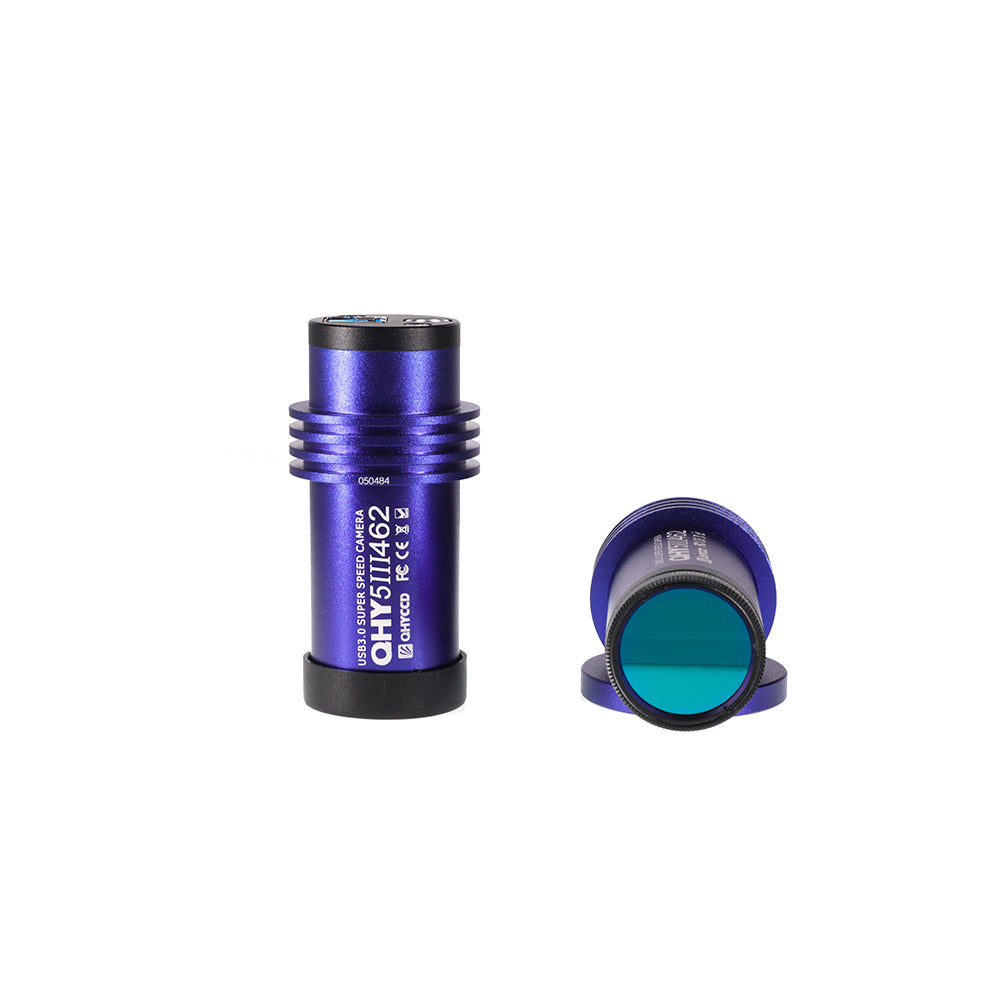The QHY462 is a planetary and autoguide camera that utilizes the Sixth Generation Sony 2.1-megapixel IMX462 STARVIS CMOS sensor. Let’s explore its features:
-
Sensor and Sensitivity:
- The QHY462 features the IMX462 sensor, which has a pixel size of 2.9μm.
- This sensor is the same size and resolution as the one used in the successful QHY5III290 camera, which is widely used by top planetary imagers.
- The IMX462 sensor incorporates new technology, including sHCG (Super High Conversion Gain) for very low read noise at high gain.
- It is exceptionally sensitive in the near-infrared (NIR) range, making it ideal for stacking hundreds or thousands of short planetary images.
- The sensor’s sensitivity to red and NIR light is significantly improved due to its back-illuminated structure1.
-
Back-Illuminated Sensor (BSI):
- The back-illuminated CMOS structure improves sensitivity by allowing more incoming photons to strike the photosensitive layer.
- Unlike front-illuminated sensors, where photons must pass through metal wiring before reaching the photosensitive layer, the back-illuminated sensor reduces this efficiency loss.
- The IMX462 sensor’s wiring structure is below the photosensitive layer, resulting in higher quantum efficiency and sensitivity to dim objects in the night sky1.
-
NIR Sensitivity:
- The IMX462 sensor is exceptionally sensitive in the NIR region.
- The RGB filters over the pixels become transparent at NIR wavelengths, allowing almost equal peak sensitivity to NIR light as to visible light.
- For planetary imagers using a methane filter that passes light around 880nm, this sensitivity is advantageous1.
-
USB 3.0 Powered and Controlled:
- The QHY462 is part of the QHY5III series, which uses USB 3.0 for both power and control.
- No additional power source is required, simplifying its setup and operation.
In summary, the QHY462 combines advanced sensor technology, low noise, and efficient USB 3.0 connectivity, making it an excellent choice for planetary imaging and autoguiding applications1. You can find more information about this camera on the QHYCCD website. 🌠

